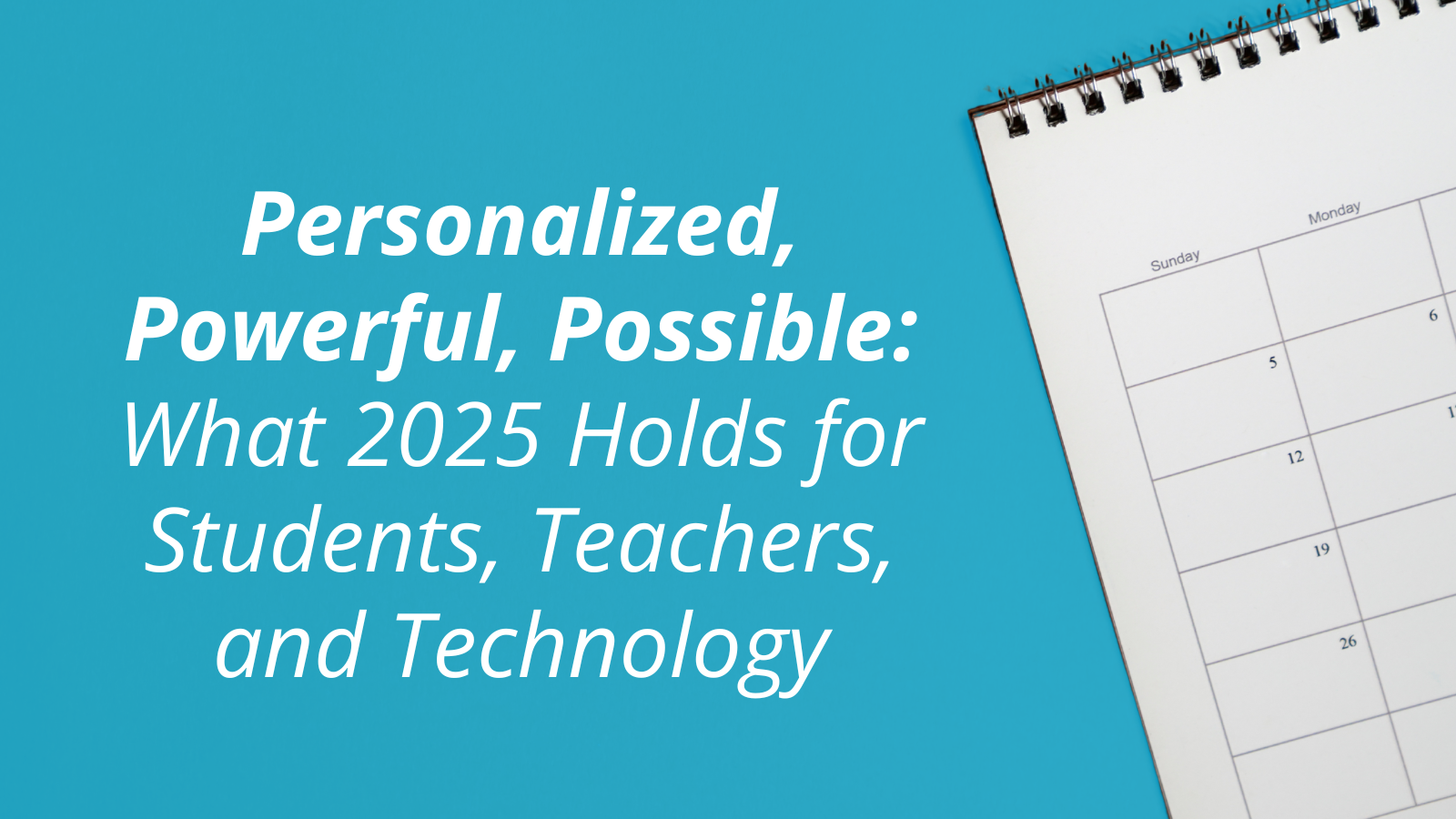Personalized, Powerful, Possible: What 2025 Holds for Students, Teachers, and Technology
Make it stand out
Whatever it is, the way you tell your story online can make all the difference.
As we welcome 2025, the intersection of artificial intelligence (AI) and educational innovation is reshaping how we think about teaching, learning, and school systems. At LEAP Innovations, we envision a future where personalized learning, powered by cutting-edge technologies, equips every learner to thrive.
Through AI advancements, the potential of personalized learning to address long-standing challenges in education—from equity to accessibility and engagement—feels promising.
We’re predicting what 2025 holds for learning and the potential for AI to redefine the educational landscape. While AI will be an incredible tool, educators remain the cornerstone of personalized learning. We’ve paired each prediction with a Next LEAP—tangible next steps for educators to accelerate their learning.
Prediction: Advancing AI Literacy to Empower Educators
AI will transform the way we work, learn, and communicate, and we must ensure that educators are prepared to empower students for a future transformed by AI.
As states allocate funding for AI implementation and districts look to equip graduates for the changing future of work, there is an urgent need for educators to understand AI capabilities, limitations, and practical applications in the classroom.
Next LEAP → Professional learning must emphasize both practical AI skills and exploratory mindsets. This approach will foster curiosity and confidence in using AI, while helping educators critically assess its role in the classroom.
Prediction: Testing AI Tools and Evaluating Impact
While AI has seen promising applications in education, 2025 will be a pivotal year for expanded application and development of AI tools for education. Piloting AI tools in classrooms to gather user feedback and measure AI’s impact on learning outcomes, engagement, and teacher workload will be a priority.
Next LEAP → Diverse educator and student voices must guide the feedback and design process. By fostering participatory design and integrating feedback from underrepresented communities, we can ensure that AI tools genuinely address the needs of all learners while upholding equity and inclusivity.
Prediction: Expanding Multimodal Features
The next wave of AI features will move beyond text-based applications, incorporating more video, voice, and multimodal features to address a broader range of learning styles and needs. By diversifying the modes of interaction, AI tools will cater to a wider variety of learners—including English language learners and students with disabilities—enabling deeper personalization, engagement, and understanding.
Next LEAP → Multimodal applications must be made in partnership with educators and students. Prioritizing universal design principles and gathering input from learners and educators will ensure that new features meet the diverse needs of all learners and empower every student to thrive.
Prediction: Deepening Personalized Learning
AI will continue to fuel personalized learning, allowing educators to tailor instruction to each student’s unique needs, abilities, and interests. This new wave of personalization will deepen the alignment between instructional strategies and individual learner profiles, fostering both academic growth and a love for learning.
Next LEAP → Applications of AI in education must enhance the connections between teachers and students. Automating routine tasks and efficiently tailoring instruction using AI can free up time for genuine, personalized interactions. Funding and implementation support are crucial to ensure equitable access and avoid widening the digital divide.
By embracing AI and advancing personalized learning in 2025, we can create equitable and dynamic environments where every learner has the opportunity to succeed. The most successful innovations will be the result of pushing further—taking the next leap—to ensure the convergence of technology and human-centered design to enhance teaching and learning.
ABOUT THE AUTHOR:
Jessica Paulsen, Vice President & Chief Strategy Officer, LEAP Innovations
Jessica Paulsen serves as the Vice President and Chief Strategy Officer at LEAP Innovations, where she leads strategic planning, organizational growth, and partnerships to advance innovation and equity in education. Since joining LEAP Innovations in 2023, Jessica has focused on driving transformative practices in personalized learning, supporting schools and educators to better meet the needs of all students. Prior to her current role, Jessica served as Chief Strategy Officer at Distinctive Schools, a network of public charter schools, and as Executive Director of Pass With Flying Colors, a college access and persistence program guiding first-generation students to success in high school, college and the launch of their careers. Jessica’s career includes 20 years of nonprofit leadership experience focused on education and youth-serving organizations.

